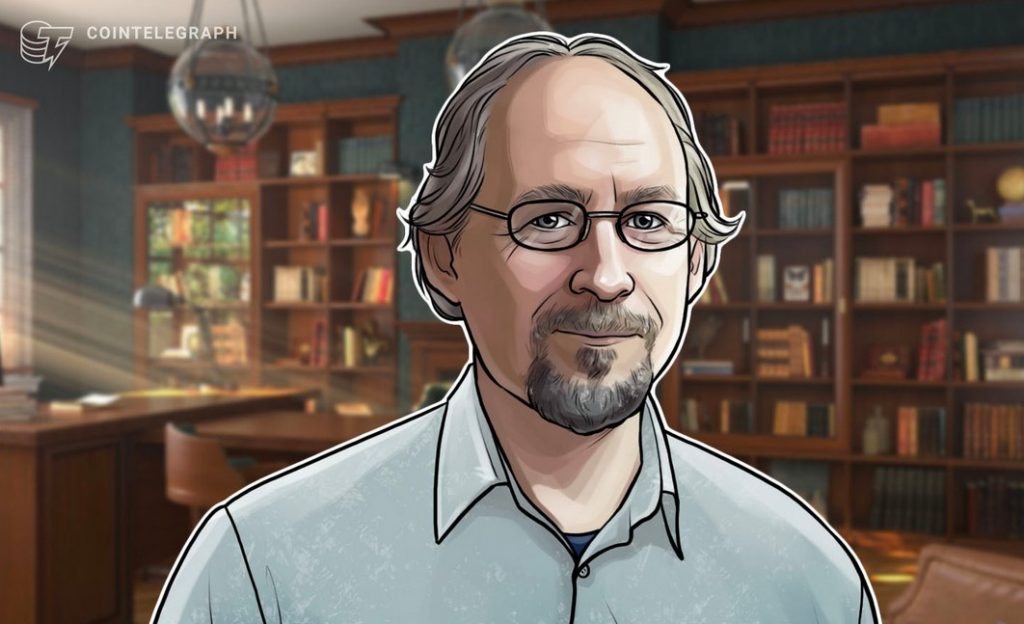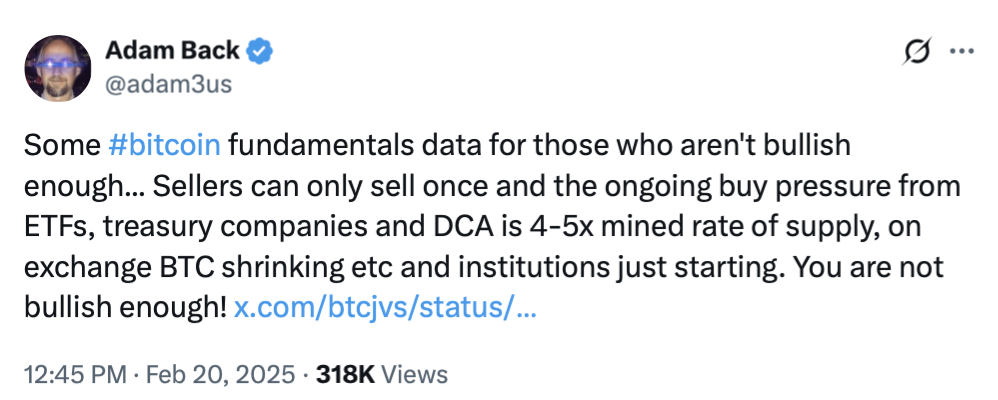For a man who many believe could actually be Satoshi, Blockstrea
  |
For a man who many believe could actually be Satoshi, Blockstream CEO Adam Back is surprisingly understanding on the question of normies buying so-called “paper Bitcoin” via the ETFs.
“You have to have some empathy for the people who want to buy Bitcoin, but they don’t know how to do it, and it’s too complicated,” Back tells Magazine.
There are limits to his tolerance though. “You also don’t really want 90% of it in ETFs or something because that might start to become a problem,” says the London-born, Malta-based cryptographer.
“So long as there’s a decent proportion of Bitcoin in individual hands and cold storage by people who are paying attention to what matters for Bitcoin and are going to make a noise if they see something they don’t like, then it should be okay.”
Being cited in the Bitcoin white paper
The 54-year-old isn’t just any random Bitcoiner. He’s one of the originals, so much so that Satoshi themself cited Back’s Hashcash in the Bitcoin white paper, published in October 2008, as inspiration for Bitcoin’s proof-of-work system. Back originally developed Hashcash in 1997 to prevent email spam and DoS attacks, and it became the basis of Bitcoin’s mining algorithm.


Satoshi said in the white paper, “To implement a distributed timestamp server on a peer-to-peer basis, we will need to use a proof-of-work system similar to Adam Back’s Hashcash [6], rather than newspaper or Usenet posts.”
He holds a computer science PhD in distributed systems from the University of Exeter and started Blockstream in 2014, which has essentially become a company focused on developing Bitcoin. The firm has its hand in everything from building out the infrastructure around Bitcoin sidechains to dedicating full-time contributors to improving the Bitcoin network.
Blockstream has done some pretty impressive things over the years. In August 2017, Blockstream announced it would use leased satellites to beam the Bitcoin blockchain all over the world so users worldwide could access the network’s data without having to use centralized internet services.
In October 2018, Blockstream launched Bitcoin’s first sidechain, the Liquid Network, which is a layer-2 scaling solution that allows faster, more confidential Bitcoin transactions.
Bitcoin ETFs make Bitcoin more “reachable”
It would be easy to wrongly assume that a hardcore Bitcoiner like Back might take issue with ETFs like many other Bitcoin maxis, given the “not your keys, not your Bitcoin” mantra.


But Back emphasizes how spot Bitcoin ETFs bolster adoption and make the asset way easier for boomers to buy.
“It’s just accessibility now; now it’s become reachable, they can invest in it,” Back says.
Back says that ETF investors are typically long-term hodlers anyway.
“ETF buyers are sticky; they don’t panic sell. They tend to buy and hold for some years.”
Many ETF buyers work on the assumption you shouldn’t put money into the stock market if you need it in less than three years.
“If they use that approach with Bitcoin ETFs, they’re probably going to do quite well, whereas people who come through Bitcoin exchanges sometimes panic sell,” he adds.
Lately, some Bitcoin maxis have done a 180 on the ETFs, moving all their Bitcoin into ETFs for convenience and due to the security risks of custodying their own funds. Prominent Bitcoiner PlanB revealed in February that he transferred his entire stash to the dark side.
“Not having to hassle with keys gives me peace of mind. I guess I am not a maxi anymore,” PlanB said in an X post.
Read also
Features
The truth behind Cuba’s Bitcoin revolution: An on-the-ground report
Features
Longevity expert: AI will help us become ‘biologically immortal’ from 2030
Meanwhile, the other big type of holder who sends shivers down Bitcoin maxis’ spines, governments, “seems to be kind of done” with dumping their seized Bitcoin, Back says.
“Some countries sold, you know, 10s of 1,000s of Bitcoin for like, I don’t know, $50 million, and it now would have been like $70 billion or something,” he laughs.
In July 2024, Germany sold 50,000 BTC for $2.87 billion. While they made a $740-million profit at the time, that would have been $1.98 billion if they had sold at Bitcoin’s current price of $96,053, according to CoinMarketCap data.
Governments around the world currently hold approximately…
cointelegraph.com
